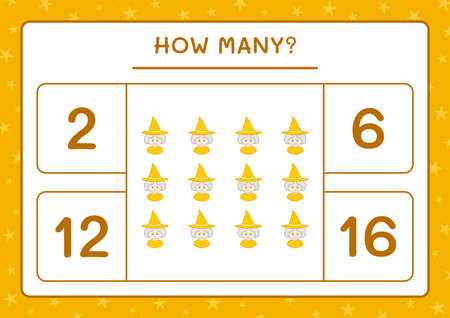Introduction to Bazi and Compatibility
Bazi, also known as the Four Pillars of Destiny, is an ancient Chinese system that uses a person’s birth date and time to reveal insights about their personality, strengths, and life path. Over thousands of years, Bazi has become a cornerstone of Eastern metaphysics and remains relevant today for people around the world interested in understanding themselves and their relationships better.
What is Bazi?
The term “Bazi” literally means “Eight Characters” in Chinese. These eight characters are derived from your year, month, day, and hour of birth. Each pillar (Year, Month, Day, Hour) contains two characters: one representing the Heavenly Stem and the other the Earthly Branch. Together, these elements create a unique energetic profile for each individual.
| Pillar | Heavenly Stem | Earthly Branch |
|---|---|---|
| Year | 1 Character | 1 Character |
| Month | 1 Character | 1 Character |
| Day | 1 Character | 1 Character |
| Hour | 1 Character | 1 Character |
Bazi’s Historical Roots
Bazi originated during the Tang Dynasty (618–907 AD) in China but has evolved over centuries. Traditionally, it was used by scholars and nobility to predict future outcomes, select auspicious dates for important events, and assess compatibility between individuals—especially in marriage.
Bazi in Today’s World: A Cross-Cultural Perspective
While Bazi comes from Chinese tradition, its principles are increasingly recognized globally. Many people in the United States now explore Bazi as a tool for personal growth and relationship insight, much like astrology or personality tests such as Myers-Briggs or Enneagram. It offers a structured yet flexible approach to understanding what makes us tick—and how we connect with others.
Why Compatibility Matters in Relationships
Compatibility is more than just getting along; it’s about creating supportive dynamics where both partners can thrive. In Bazi, compatibility analysis helps couples identify their natural strengths and challenges together. It provides practical advice on communication styles, emotional needs, and even potential areas of conflict.
| Bazi Element | Personality Traits | Relationship Impact |
|---|---|---|
| Wood | Growth-oriented, compassionate | Nurturing partner, values progress together |
| Fire | Passionate, enthusiastic | Keeps romance alive but may need balance with calmer elements |
| Earth | Stable, dependable | Brings security but may resist change in relationships |
| Metal | Disciplined, principled | Loyalty-focused but can be critical if mismatched with free-spirited types |
| Water | Adaptable, wise | Easily connects emotionally but may need grounding from more structured partners |
Bazi compatibility isn’t about labeling relationships as “good” or “bad.” Instead, it highlights how two people can work together more harmoniously by understanding each other’s core energies. This approach encourages open-mindedness and mutual respect—values that fit perfectly into modern American culture where diversity and self-awareness are celebrated.
2. Gathering and Preparing Birth Data
Step-by-Step Guide to Collecting Birth Information
Before you can calculate and interpret Bazi compatibility, it’s important to gather accurate birth data for both people involved. In the U.S., people often have questions about time zones, daylight saving time, or missing birth times. Here’s a practical guide to help you collect and prepare this information.
Step 1: Collect Basic Birth Information
| Information Needed | Examples |
|---|---|
| Full Name | John Smith, Emily Johnson |
| Date of Birth (MM/DD/YYYY) | 04/25/1990, 12/18/1985 |
| Time of Birth (24-hour format preferred) | 14:32, 07:15 |
| City & State of Birth | Los Angeles, CA; Dallas, TX |
Step 2: Verify the Time Zone
The U.S. spans multiple time zones. Double-check the local time at the place of birth. Use online tools like timeanddate.com to confirm if daylight saving time was in effect.
- PST: Pacific Standard Time (e.g., California, Washington)
- MST: Mountain Standard Time (e.g., Colorado, Arizona)
- CST: Central Standard Time (e.g., Texas, Illinois)
- EST: Eastern Standard Time (e.g., New York, Florida)
Step 3: Adjust for Daylight Saving Time (DST)
If the birth date falls during DST (usually from March to November), adjust the birth time by subtracting one hour. For example, if someone was born at 3:00 PM EDT in July, use 2:00 PM EST for Bazi calculation.
Step 4: What If You Don’t Know the Exact Birth Time?
This is a common issue in America since not everyone has access to their exact birth time. Here are some tips:
- Check Your Birth Certificate: This is usually the most reliable source.
- Ask Family Members: Sometimes parents or relatives remember whether it was morning, afternoon, or evening.
- If Still Unknown: Use “noon” as a placeholder. While not perfect, it gives a general idea for compatibility checks.
| Birth Time Known? | Bazi Calculation Approach |
|---|---|
| Exact Time Available | Use as is for most accurate results. |
| No Exact Time, Only Morning/Afternoon/Night Known | Select a middle time in that range (e.g., 9:00 AM for morning). |
| No Information at All | Use 12:00 PM noon as default. |
Step 5: Organize All Data Clearly
Create a simple table or spreadsheet with all relevant details for each person. This helps avoid mistakes when entering information into a Bazi calculator or sharing with an expert.
| Name | Date of Birth | Time of Birth | City/State of Birth |
|---|---|---|---|
| Alice Lee | 05/16/1988 | 08:45 AM (PDT) | Palo Alto, CA |
| Samantha Green | 09/02/1991 | (Unknown – using 12:00 PM) | Tampa, FL |
Your Next Step:
Once you have all this information organized and double-checked for accuracy—especially time zone and DST—you’re ready to move on to calculating Bazi charts and exploring compatibility!

3. Calculating Bazi Charts
Understanding the Basics of Bazi Chart Calculation
Before diving into Bazi compatibility, you need to know how to create a Bazi chart for each person involved. A Bazi chart is essentially a snapshot of the Four Pillars of Destiny, based on your birth date and time. Each pillar (Year, Month, Day, and Hour) contains two components: a Heavenly Stem and an Earthly Branch. Think of these as parts of your astrological DNA, similar to how Western astrology uses sun, moon, and rising signs.
What Information Do You Need?
| Required Information | Why Its Needed |
|---|---|
| Date of Birth (Month/Day/Year) | This determines all four pillars in your Bazi chart. |
| Time of Birth (Hour & Minute, if possible) | The hour pillar adds more detail and accuracy to your chart. |
| Birthplace (City & State) | This helps adjust for local time differences; some tools do this automatically. |
How to Generate Your Bazi Chart Online
- Choose a Reliable Tool: There are several free and paid online Bazi calculators that are easy to use in the US. Popular options include Master Tsai’s Chinese Astrology, Your Chinese Astrology, and smartphone apps like “Bazi Calculator” available in app stores.
- Enter Your Details: Input your full birth date, exact time (if known), and city/state of birth. Make sure to select the correct time zone; many American cities are supported by default.
- Generate the Chart: Click the calculate or submit button. The website or app will display your Four Pillars—each with a “Heavenly Stem” and “Earthly Branch.” Sometimes these are shown as Chinese characters along with their English equivalents.
Bazi Terminology—American-Friendly Explanations
- Pillar: Represents one aspect of your birth data (year, month, day, or hour).
- Heavenly Stem: Think of this as the “surface energy” or personality traits for each pillar.
- Earthly Branch: Acts like the underlying influences—kind of like your moon sign in Western astrology.
- Element: Each stem and branch is associated with one of five elements (Wood, Fire, Earth, Metal, Water), which are key to understanding compatibility later on.
A Sample Bazi Chart Layout
| Pillar | Heavenly Stem (Element) | Earthly Branch (Animal Sign & Element) |
|---|---|---|
| Year | Yang Wood (Jia) | Rat (Zi) – Water element |
| Month | Yin Fire (Ding) | Tiger (Yin) – Wood element |
| Day | Yang Earth (Wu) | Horse (Wu) – Fire element |
| Hour | Yin Metal (Xin) | Rabbit (Mao) – Wood element |
Troubleshooting Tips for Americans Using Online Tools
- If you don’t know your exact birth hour, just leave it blank or select “Unknown”—the calculator will still give you most of your chart.
- If you were born during Daylight Saving Time, check if the tool adjusts for that automatically. If not, adjust your birth hour by subtracting one hour from what’s on your birth certificate.
What’s Next?
You’ve now got your individual Bazi charts! In the next section, you’ll learn how to interpret these charts side-by-side to see how compatible two people might be—whether for romance, friendship, or business partnerships.
4. Key Compatibility Factors in Bazi
Understanding the Building Blocks of Bazi Compatibility
Bazi compatibility is a bit like checking the ingredients before making a recipe—you want to make sure everything mixes well together. In Chinese metaphysics, three major factors help determine how two people might get along: Day Masters, Element interactions, and Animal Signs. Let’s break down each one in a way that makes sense for everyday life in America.
Day Masters: Your Core Personality Type
The Day Master in Bazi is similar to your sun sign in Western astrology—it represents your core self. Think of it as your “default setting.” When looking at compatibility, you want to see if your Day Master harmonizes with your partner’s.
| Day Master (Element) | Personality Analogy | Example in Daily Life |
|---|---|---|
| Wood | The Go-Getter (like an entrepreneur) | Loves starting new projects and pushing forward—think of someone always launching side hustles or community events. |
| Fire | The Motivator (like a coach) | Brings energy and passion, inspiring others—imagine the enthusiastic sports coach or motivational speaker. |
| Earth | The Stabilizer (like a teacher or counselor) | Provides support and stability—like that friend who always helps you move or gives solid advice. |
| Metal | The Organizer (like an accountant or engineer) | Keeps things structured and fair—think of someone who loves spreadsheets or planning family vacations in detail. |
| Water | The Connector (like a networker) | Adapts easily and connects people—picture the friend who introduces everyone at parties or knows all the best local spots. |
If two people have complementary Day Masters, their relationship tends to flow more smoothly—just like peanut butter and jelly work well together!
Element Interactions: Nature’s Chemistry Set
Bazi uses five elements—Wood, Fire, Earth, Metal, and Water—to describe personality traits and how people interact. The relationship between these elements can be supportive, controlling, or conflicting. For Americans, think of it like the chemistry between teammates on a sports field or colleagues at work:
- Supportive Cycle: Like a basketball team where each player assists another (e.g., Wood feeds Fire, Fire creates Earth).
- Controlling Cycle: Like a friendly rivalry that pushes both people to improve (e.g., Water controls Fire).
- Conflicting Cycle: Like coworkers with totally opposite approaches that sometimes clash (e.g., Fire melts Metal).
| Element 1 | Interaction With… | Type of Relationship |
|---|---|---|
| Wood | Fire (supports) | Smooth teamwork; creativity sparks action. |
| Fire | Earth (supports) | Puts ideas into practice; excitement leads to results. |
| Earth | Metal (supports) | Keeps plans grounded; structure emerges from ideas. |
| Metal | Water (supports) | Cuts through confusion; clarity flows. |
| Water | Wood (supports) | Nourishes growth; opportunities expand. |
| Fire | Metal (conflicts) | Tension may arise; needs communication to resolve. |
Animal Signs: The Zodiac Connection You Didn’t Know You Needed
The 12 animal signs in Bazi are kind of like mascots for different years. Each person gets one based on their birth year, just like being born under the sign of the Tiger or Rabbit. In American culture, think of this as being sorted into Hogwarts Houses or rooting for rival sports teams—it can create instant connections or playful rivalries.
| Zodiac Animal Pairing Example | Cultural Analogy |
|---|---|
| Tiger & Pig | A dynamic duo like Batman & Robin—different but highly compatible! |
| Dragon & Rooster | An effective partnership like quarterback and wide receiver—they just “get” each other on the field. |
| Tiger & Monkey | A classic rivalry, kind of like Yankees vs. Red Sox—can be exciting but challenging if not managed well. |
| DOG & DRAGON | Differing viewpoints like Democrats and Republicans—may take effort to find common ground! |
A Real-Life Example: Sarah & Mike’s Compatibility Check
Let’s say Sarah is a Wood Day Master born in the Year of the Rabbit, while Mike is a Fire Day Master born in the Year of the Dog. According to Bazi:
- Their Wood-Fire connection is positive—Sarah’s ideas inspire Mike’s actions.
- The Rabbit and Dog are considered part of a “friendship trio,” meaning they usually get along well.
- If their other elements also align (like having supportive Earth or Water), this couple could enjoy strong harmony both at home and socially.
If you’re curious about your own Bazi chart, try comparing these factors with your friends, family, or partner—it can add a fun twist to game night conversations!
5. Interpreting Results and Real-World Applications
How to Read Bazi Compatibility Outcomes
Bazi compatibility charts often look complex at first, but you can break them down into simple, useful insights. When you compare two people’s Bazi charts, look for the following key areas:
| Element | What It Represents | Compatibility Clues |
|---|---|---|
| Heavenly Stems | Surface personality traits and communication style | Similar or harmonious stems = easy conversation Clashing stems = possible misunderstandings |
| Earthly Branches | Deeper drives, values, emotional needs | Branch harmony = emotional support Branch conflict = tension or learning opportunities |
| Five Elements (Wood, Fire, Earth, Metal, Water) | Natural energies that influence both people | Supporting elements = growth together Controlling elements = challenges to balance out |
If you see mostly supportive interactions in these areas, it suggests natural compatibility. More clashes signal growth areas or potential friction.
Common American Misconceptions About Fate and Relationships
- “Compatibility means destiny.” – In Bazi, compatibility shows how two peoples energies interact, not whether you are “meant to be.” Its a guide, not a guarantee.
- “A bad match means a doomed relationship.” – Many Americans think an unfavorable chart spells disaster. In reality, knowing your differences helps you work through them with greater understanding.
- “Fate cant be changed.” – Bazi encourages self-awareness and proactive choices. Your chart is a map, but you decide how to walk the path.
Tips for Using Insights Constructively in Everyday Life
- Open Communication: If your Bazi analysis shows potential for misunderstandings, talk openly with your partner about your feelings and expectations.
- Play to Strengths: Use knowledge of each others strengths (from the chart) to divide responsibilities or solve problems together more smoothly.
- Avoid Blame: Don’t use Bazi as an excuse for arguments (“Its just my element!”). Instead, use it as a tool for empathy and teamwork.
- Personal Growth: Notice areas where your energies clash—these are opportunities to grow as individuals and as a couple.
- Keep Perspective: Remember that no chart is perfect. Every relationship takes effort and understanding beyond what any system can predict.
Bazi Compatibility in Real-Life Scenarios
| Scenario | Bazi Insight Example | Practical Action |
|---|---|---|
| Differing Elements (e.g., Fire & Water) | Tendency toward passionate debates or emotional ups and downs | Create routines that encourage compromise and shared activities to balance energy levels |
| Harmonious Stems & Branches | Naturally smooth communication; quick conflict resolution | Pursue joint projects or hobbies that build on your mutual strengths |
| Challenging Element Interactions (e.g., Metal controls Wood) | Might feel criticized or restricted by each other’s habits | Acknowledge differences; set healthy boundaries to respect each others space |
The Bottom Line: Making Bazi Work for You in America
Bazi offers a unique lens for understanding yourself and your relationships. Instead of focusing on “perfect matches,” use its insights as talking points and roadmaps for building stronger partnerships—whether in love, friendship, or work. Most importantly, remember that Bazi is about awareness and choice—not rigid fate.


